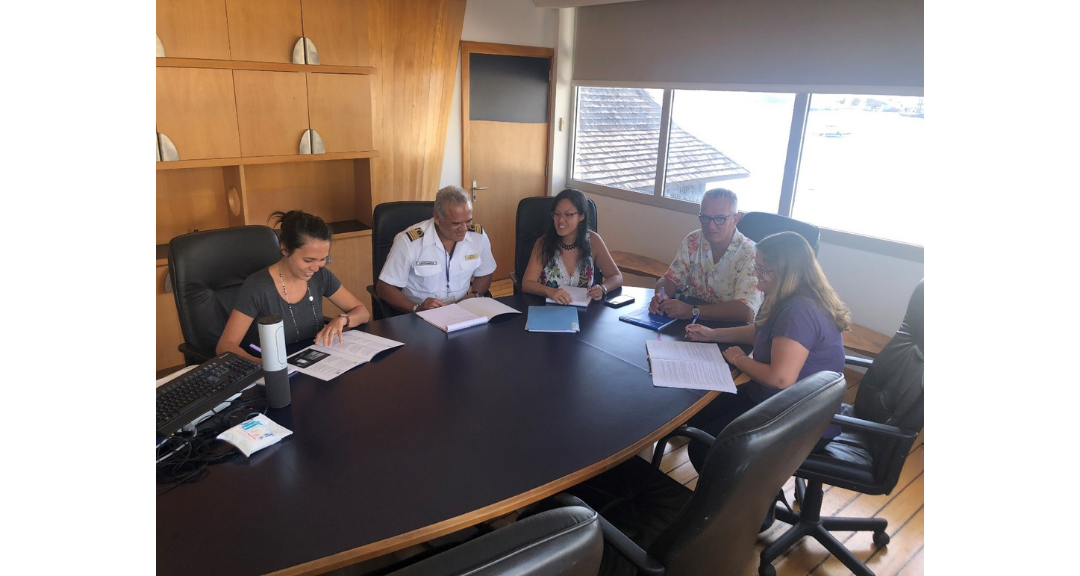Papeete is on the island of Tahiti, in French Polynesia. With the local economy reeling from the impact of the Covid-19 crisis, the port unveiled a support package for Polynesian businesses on 17 June. The €4 million euro package covers the maritime industry, tourism and inter-island transport. But it also represents an opportunity to adopt a more sustainable approach to development, and that’s why AIVP was keen to talk to Jean-Paul Le Caill, CEO of Port Autonome de Papeete.
The Port autonome of Papeete is AIVP member since 2013.
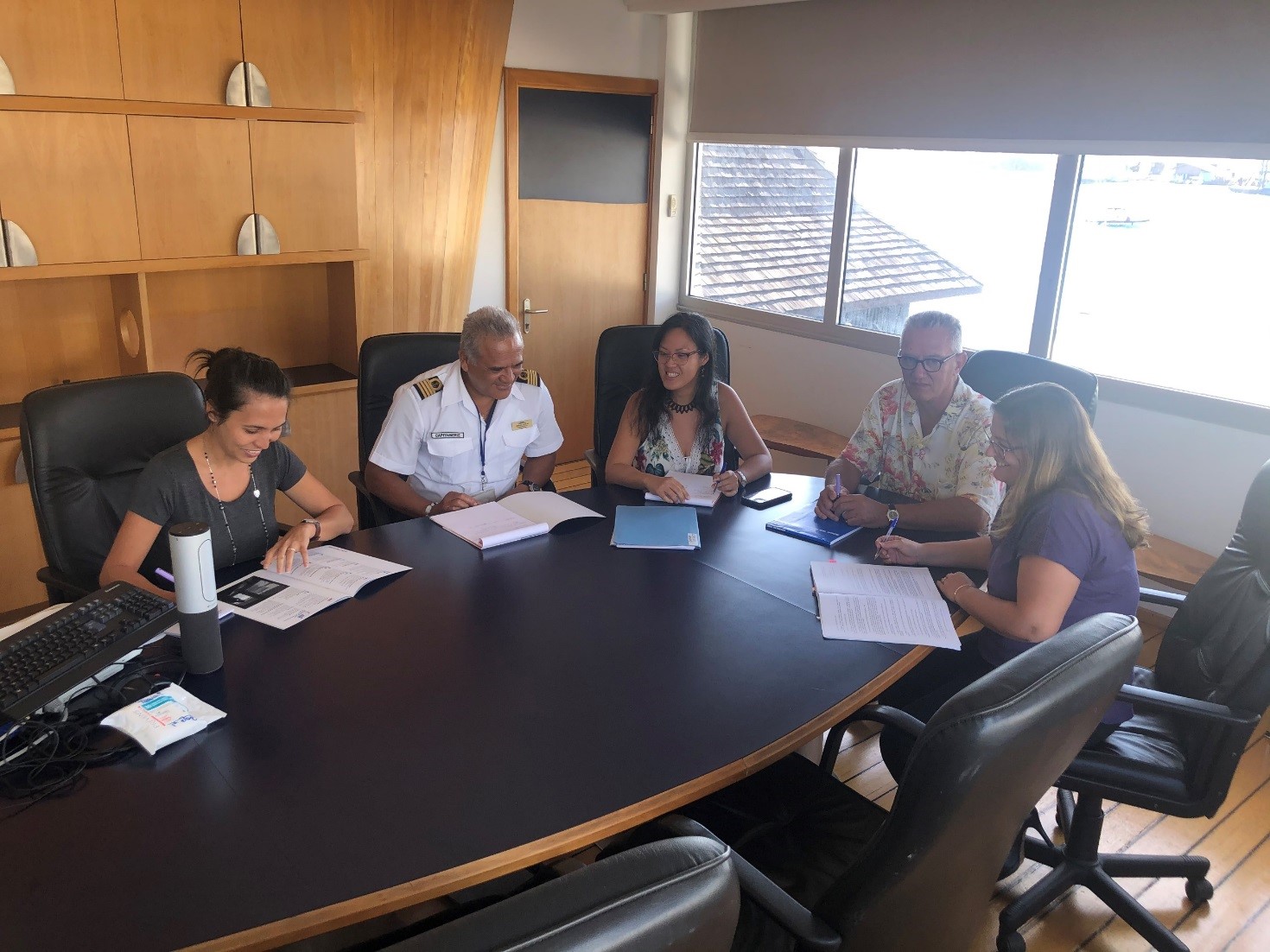
AIVP – You have announced a package of support measures for the local economy, and the port in particular. There are around 200 businesses in the port community, on which around 5,000 jobs depend either directly or indirectly. So protecting jobs necessarily means supporting the port cluster. A number of other vital activities for the town of Papeete are also dependent on the port, such as the cruise industry with its 1.7 million passengers every year. (n.b. According to the PF Statistics Institute, there are 40 to 45k cruise passengers annually. Whereas 1.5 to 1.8 million passengers a year pass through Papeete’s ferry terminal, used by the shuttle boats that operate between Tahiti and Moorea).
What was Papeete’s experience of the pandemic, and how has it affected the port and the town?
Jean-Paul Le Caill, CEO of the Port autonome of Papeete – As the capital of French Polynesia, Papeete is home to all of the political institutions (the Parliament of French Polynesia, the Government, the High Commission of the Republic in French Polynesia which represents the State, and the Economic, Social, Environmental and Cultural Council of French Polynesia). Papeete is an administrative centre that is also home to the majority of French Polynesia’s economic and industrial infrastructures, including three main sectors, all located on the outskirts of the town: the industrial zone of Tipaerui, another in Titioro, and the port zone, which is the largest and includes Port Autonome de Papeete. In addition, the town of Papeete is a major educational centre in Polynesia, with more than 20 infants’ and primary schools (public and private), six middle schools, two high schools, a private university and training centres.
With 190,000 inhabitants, the island of Tahiti is the equivalent of a medium-sized French town. The capital has 27,000 residents, but every day its population is multiplied by five.
Even part of the population of Moorea, the sister island located 15 km from Tahiti, takes the shuttle boat to Papeete every day. The general lockdown ordered on 21 March 2020 suddenly shut down all activity in the town, with the closure of most shops, restaurants, cinemas, bars, etc., along with schools, businesses, public parks, and so on.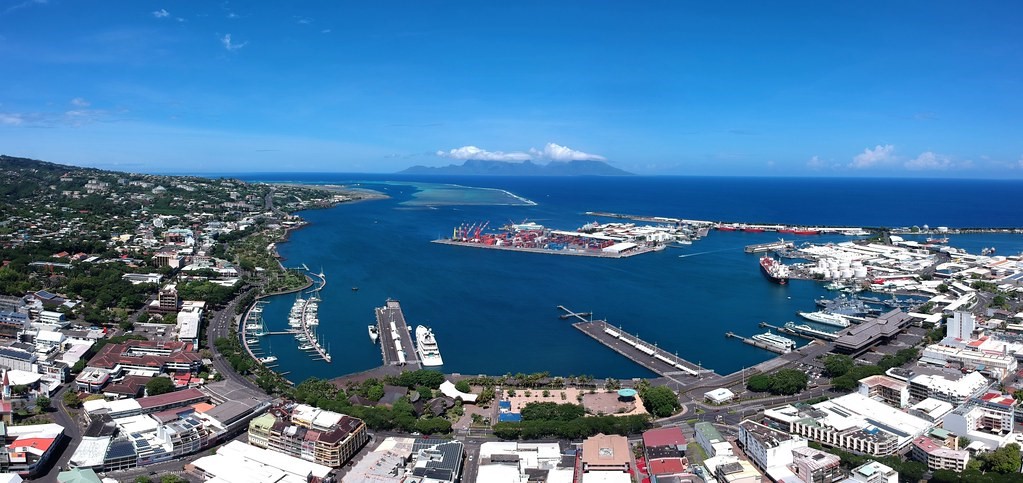
In April, at the height of the crisis, 85% of businesses had almost no activity, and nine out of ten companies in the tourist sector saw their revenue fall by at least 75%. With the exception of supermarkets, all businesses experienced a severe deterioration in cash flow in April and May.
The cruise sector was worst affected, with all activity shutting down immediately. While the lockdown was introduced on 21 March 2020, the sector had actually ceased all operations as early as 11 March, with current cruises being interrupted, ships returning to dock in Papeete, and passengers repatriated to their home countries.
For maritime shipping between Tahiti and Moorea, revenue fell by 90% with one line halting operations completely, and the second running at 20% capacity. Passenger traffic plummeted from a usual 5,000 people per day to just 300-350 per day in April. Even today, passenger numbers remain around 30% down on the same period last year, mainly owing to the absence of tourists.
Fortunately, and to end on a positive note, goods traffic and international energy transport have been maintained. The port has continued to operate, with cargo ships, tankers and LNG carriers continuing to pass through the port in numbers identical to previous years.
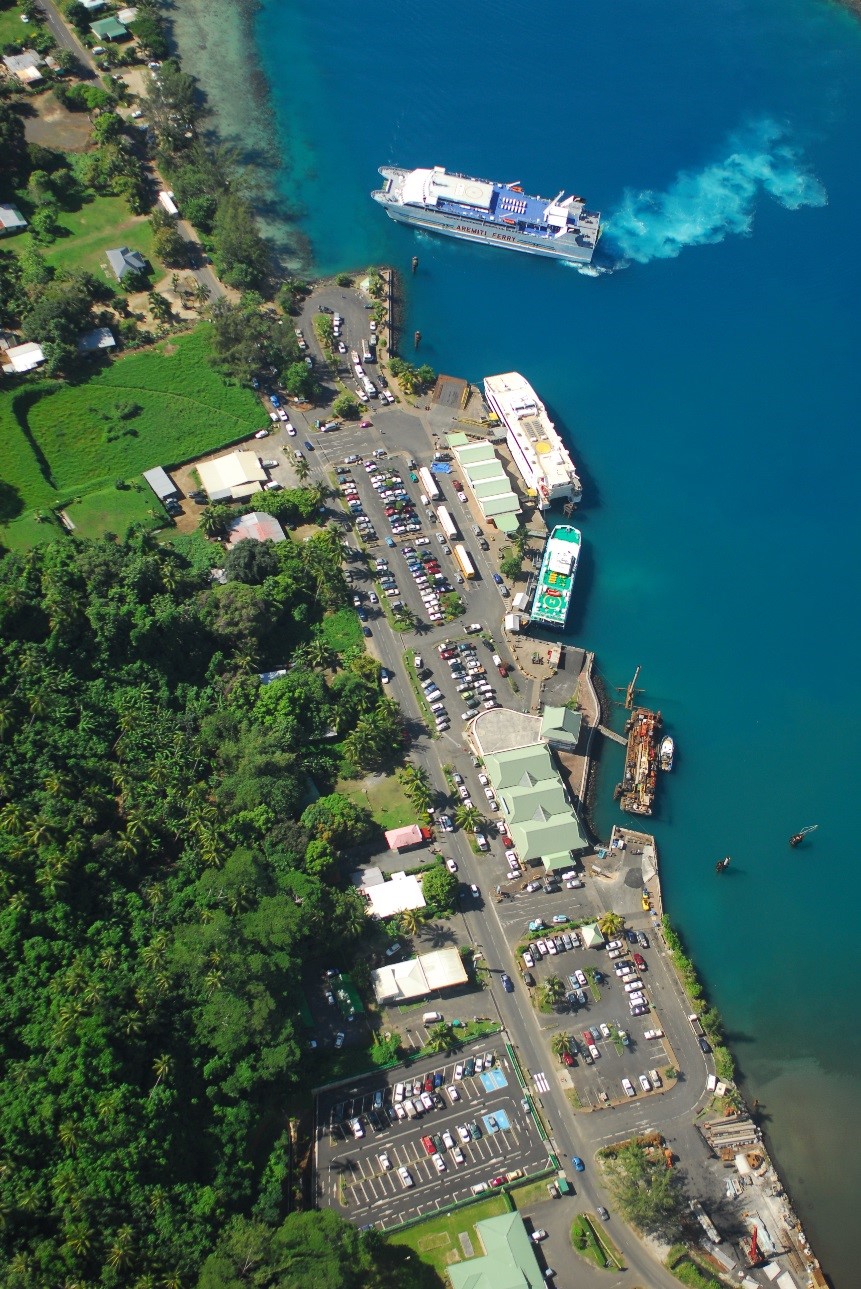
AIVP – The dense economic fabric of the port is vital for Tahiti. It is a true cluster with a clear focus on the blue economy. However, the health and economic crisis means that production and international trade is facing a reorganisation.
How will your support package enable local businesses to weather the recession?
Jean-Paul Le Caill, CEO of the Port autonome of Papeete – We started from the generally accepted assumption that the lockdown of all of French Polynesia would trigger a real economic crisis. As I have stressed, the sudden collapse in business was brutal.
It was also virtually certain that the post-lockdown recovery would be tentative. The Port of Papeete had a duty to put in place support measures, to prevent firms from going bust, protect jobs, and ensure that sufficient funds were available to help with the recovery.
The Port derives its income from three sources: a toll on the value of goods imported (around 9.2 million euros), fees charged for use of land (8.3 million euros), and port services such as towage, berthage, storage fees, etc. (around 8.3 million euros).
The Port has agreed to accept a lower level of income in 2020, and this will allow businesses in the port community to continue operating, while also safeguarding the Port’s future revenue in the medium term.
That level of revenue must be maintained at all costs, in order to sustain the Port’s operational capacities (including the maintenance and continuous improvement of existing infrastructures), and most importantly to push ahead with all of the planned new investments, which include extending the coasters dock, cruise terminal, marina, etc.
The Port’s board of directors has agreed to grant certain exemptions, mostly for a six-month period, to reduce businesses’ costs and help support the recovery. These exemptions represent a figure of 4 million euros, which is close to 16% of the Port’s annual revenue.
It is also worth bearing in mind that the Polynesian Government has adopted support measures for the wider economy, including a job support scheme, or deferment of certain taxes and social security contributions.
AIVP – Tahiti is a popular destination with North American and European tourists, with visitor numbers reaching a ten-year peak in 2018. Its infrastructures and installations, focused on boating and water-based activities such as diving or snorkelling, have seen sustained growth in this sector which accounts for 15% of Polynesia’s GDP. In response to the crisis, Tahiti Tourisme has put together a recovery plan to assist with the restarting of economic activity from 15 July, when international flights resume. In addition, the Port’s own recovery plan also includes provision for tourism.
Could you tell us about your involvement in this sector, and your cooperation with the economic interest grouping Tahiti Tourisme?
Jean-Paul Le Caill, CEO of the Port autonome of Papeete – While French Polynesia covers a vast area the size of Europe (nearly 5,000,000 km2), it is nonetheless a “small territory” with a population of just 280,000. As you rightly point out, tourism accounts for 8% of GDP and 15% of jobs in the commercial sector, and generates over 540 million euros in revenue every year. The cruise industry, which is of particular interest to the Port, generates revenue close to 60 million euros. It is therefore a very important sector with considerable growth potential that requires the involvement of everyone concerned.
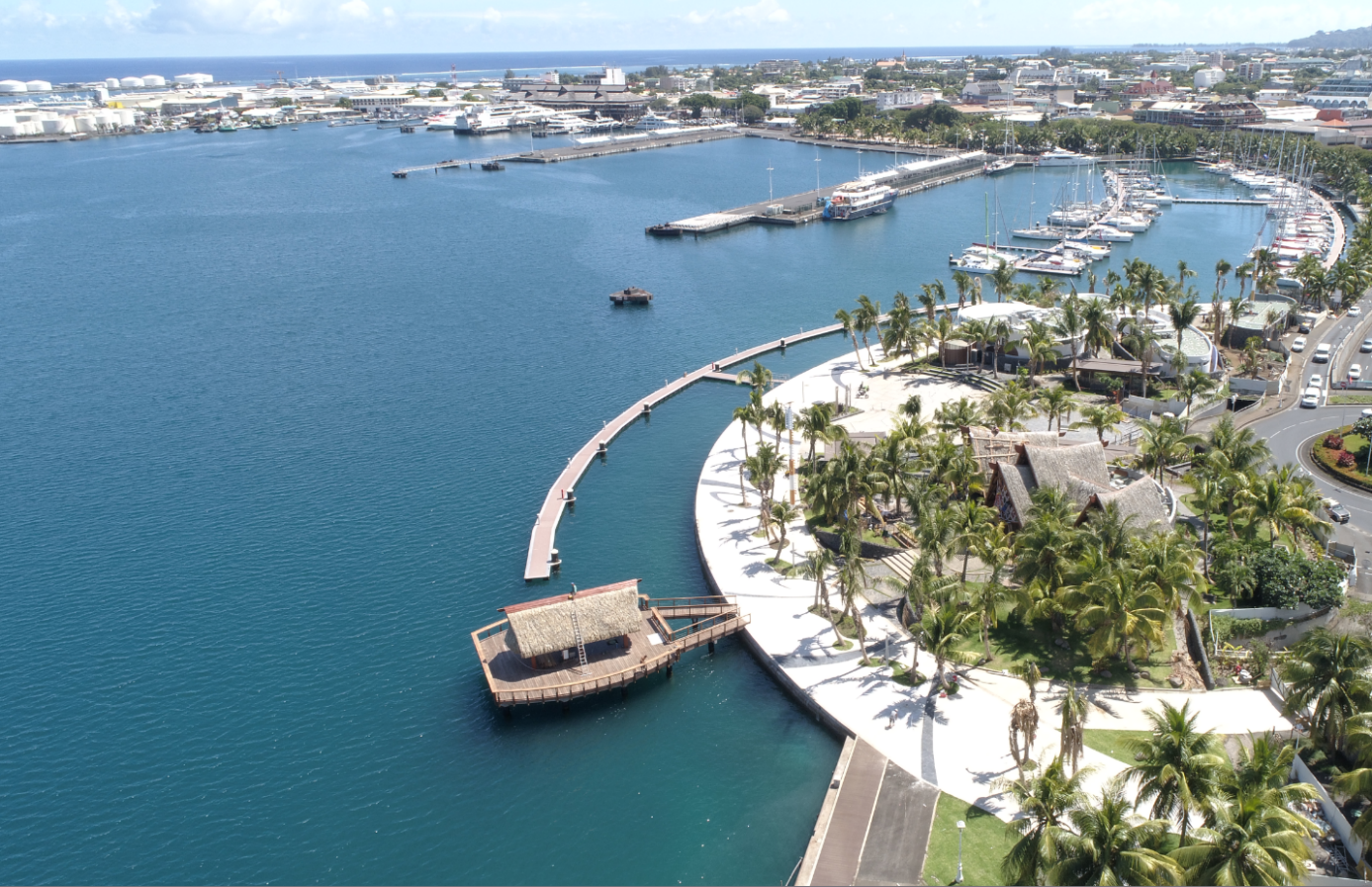
For Port Autonome de Papeete, that has meant a new official role since 2011, formally enshrined in the Code of Maritime Ports of French Polynesia, which is to work to promote the cruise, boating and luxury yachting sector. The Port does this mostly by developing infrastructures designed to accommodate these kinds of tourists. Some of these developments have already been completed, such as Papeete’s marina, while others are still at the planning stage, such as the future cruise terminal (a 15 million euro investment) or the marina in Uturoa (on the island of Raiatea, 234 km north-west of Tahiti).
AIVP – In a fragile environment like the Polynesian islands, the transition to a carbon-free economy and the protection of biodiversity are crucial challenges. The “managed marine area” of Te Tainui Atea has been the world’s biggest protected space in its category since 2018. Tahiti, which has by far the largest population of any of the Polynesian islands, has an exceptional natural heritage to be preserved. Eco-mobility, which was in the spotlight at a forum held in Papeete in 2019, and renewable energies, which provide more than 30% of Tahiti’s electricity compared with just 19% in metropolitan France, are future solutions for protecting the natural environment.
What ideas do you have for kick-starting the economy in a sustainable way?
Jean-Paul Le Caill, CEO of the Port autonome of Papeete – French Polynesia is one of the territories most at risk from climate change. Located on the route between Asia and the Americas, Port Autonome de Papeete is at the crossroads of a rapidly changing world. It is simply inconceivable to imagine any economic recovery that is divorced from social and environmental considerations.
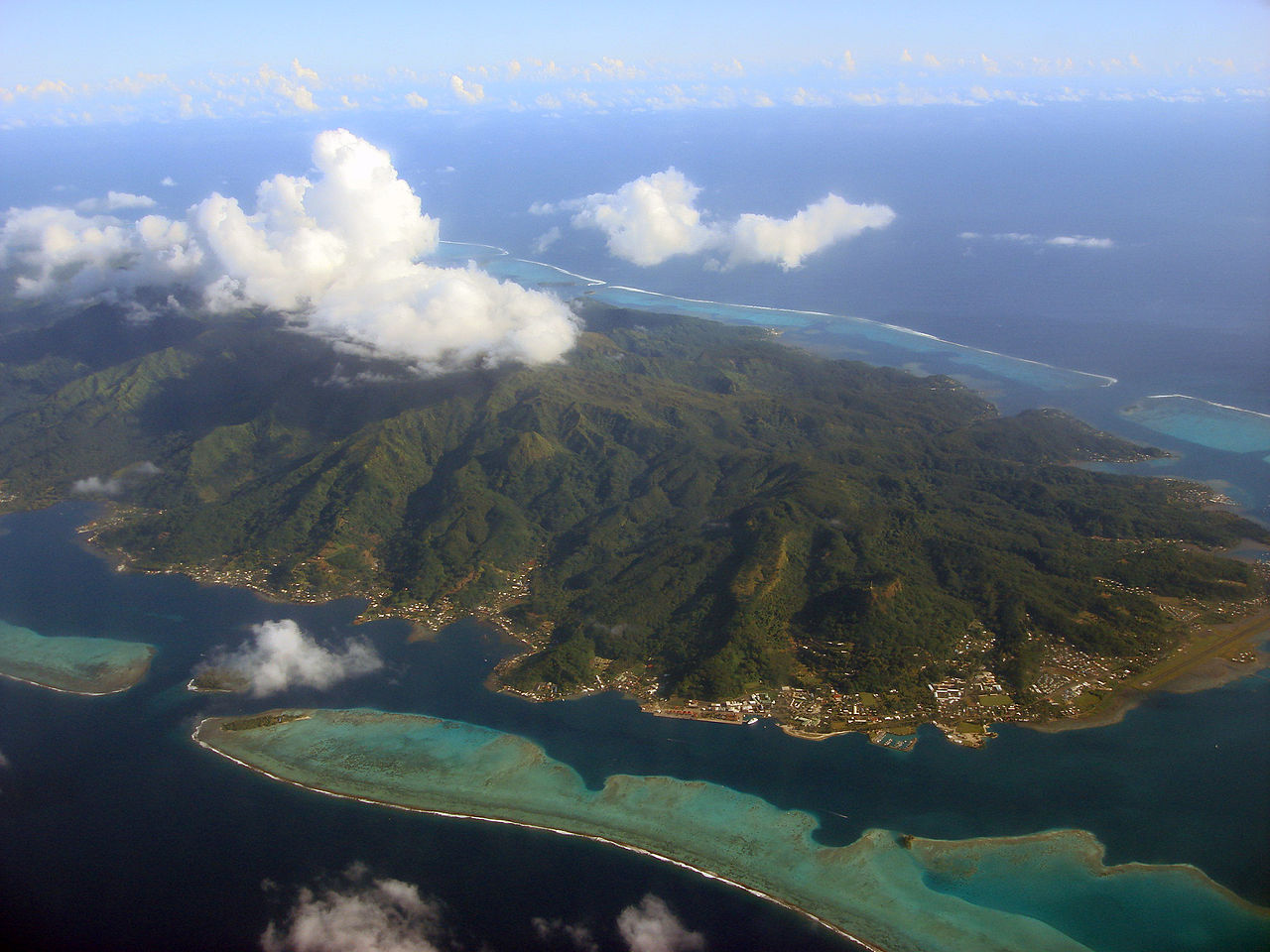
French Polynesia is a maritime giant, and Port Autonome de Papeete is its economic engine. In terms of sustainable development, our immediate challenge will be to increase our resilience in the face of environmental challenges and reduce our greenhouse gas emissions. That will require new investments, which will contribute to kick-starting the Polynesian economy. To that end, where appropriate we are inserting an environmental clause into our public procurement agreements.
The Port is already taking one-off measures designed to cut our emissions. Our fleet of service vehicles is now entirely made up of small, fully electric vehicles. We also have five solar power plants generating a total of 227 kilowatts. The aim is to generate as much of the energy we use on-site as possible.
In terms of biodiversity, the yacht moorings are designed with cavities in their upper third sections, to shelter various species of fish.
We are also paying closer attention to the hulls of foreign vessels, in an effort to reduce the risk of them introducing invasive species which could damage our ecosystems.
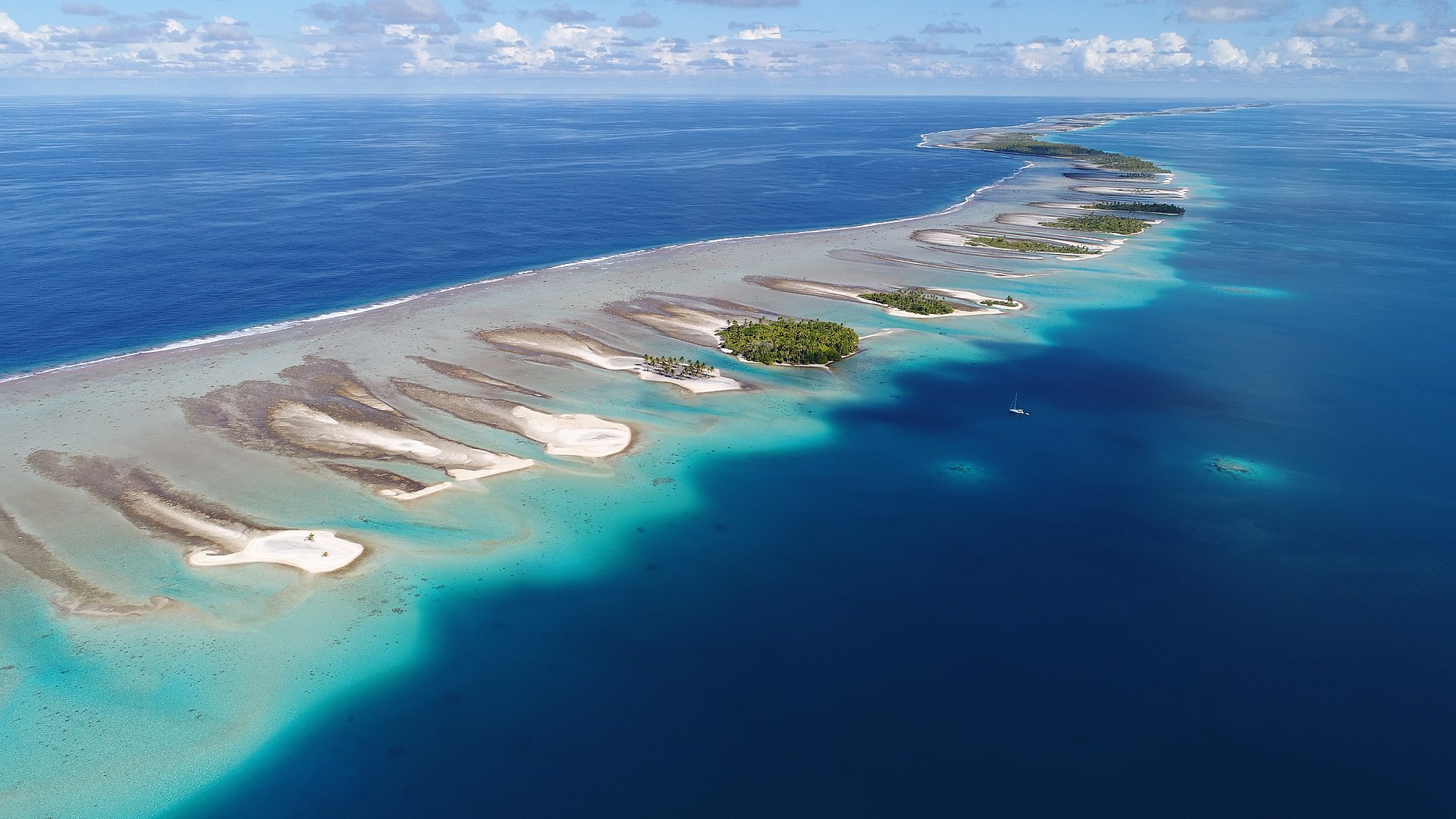
Finally, since the beginning of 2020, Port Autonome de Papeete has been working with the Agency for the Ecological Transition (ADEME) and the French Development Agency (AFD) to create a master plan for the ecological and energy transition. The plan aims to reduce the port’s environmental footprint and emissions, while investing for its concession holders and helping to kick-start the economy through “virtuous” or socially responsible projects.
This strategic document is based on four key priorities:
1. Waste management and circular economies,
2. Energy conservation and efficiency, and renewable energies;
3. Waste water management,
4. Transport, internal traffic, mobility and travel.
The Municipality of Papeete has also invested heavily in a collective waste water treatment system designed to improve water quality in the roadstead.

